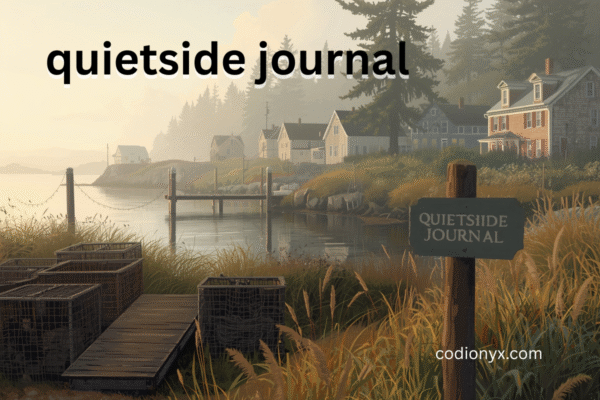Introduction
In the current context of digital learning, instructors and institutions are increasingly relying on interactive tools to generate participation, collaboration, and meaningful conversations. This is especially true in environments that are asynchronous. At Penn State University (PSU), one such technology, VoiceThread psu, stands out due to the variety it offers and the ease with which it may be utilized. VoiceThread, which is seamlessly integrated into the learning platforms of PSU, gives both students and faculty the ability to engage with media and ideas in ways that go beyond the scope of traditional discussion forums. This is accomplished through the use of multimedia and interactive commentary.
How does PSU make use of VoiceThread, and what exactly is it?
The web-based multimedia communication tool known as VoiceThread gives users the ability to build dynamic presentations that incorporate a variety of media, including photographs, videos, documents, and more. One of the things that sets it different from other similar products is the seamless manner in which it enables viewers to leave comments on slides or media using text, voice, audio files, video, or doodling. It recreates the experience of face-to-face interaction in a digital setting, making it possible for students to engage in reflective and collaborative learning.
The VoiceThread platform has been adapted to the specific needs of PSU and incorporated into the e-learning environment of the university. Through a partnership with VoiceThread, the Educational Technology Services (ETS) team at Penn State was able to secure automatic authentication through the use of Penn State Access Accounts. This resulted in the creation of a system that allows both faculty and students to launch the tool without the need for separate logins.
Read also: https://codionyx.com/ohlone-canvas/
What You Need to Know About voicethread PSU
Accessing the portal at voicethread.psu.edu and logging in with their Penn State credentials is all that is required for users to begin utilizing VoiceThread at Penn State University. Once they arrive at that location, they are taken to the MyVoice dashboard, where they are able to create, view, and manage their VoiceThread presentations. Penn State Berks is learningdesign.psu.edu.
The workflow is easy to understand:
- In order to create a new VoiceThread, click the Create button.
- You can upload or import media from your personal computer or from external sources such as social media or digital libraries at Penn State Berks. This includes photographs, slides, videos, PDFs, Word files, and other types of media including PowerPoint presentations.
- The media slides can be rearranged, titled, rotated, or deleted as necessary, according to Penn State Berks.
- By clicking the comment button, you can add comments using text, a microphone, a webcam, a phone, or an audio file. The navigation is straightforward thanks to the on-screen tools provided by Penn State Berks.
- The Power of Pedagogy: Participation, Reflection, and the Voice of the CommunityThe capabilities of Thread extend much beyond those of a simple presentation tool. At PSU, it serves a variety of instructional functions, including…
- Slides from lectures or media stimuli can be posted by faculty members, and students can be invited to comment using voice or video. This results in conversations that are more interesting than those that are limited to text.
The Introductions of Students
At the beginning of each semester, teachers frequently give students the assignment of creating introductory VoiceThreads. These VoiceThreads allow students to record audio or video greetings, which assists both classmates and teachers in developing a sense of community and presence Commonwealth Campus Teaching Support.
The feedback on the draft and the formative practice
Students are able to upload drafts of their attempts for feedback. Through the use of audio or text comments, peers or instructors respond, so enhancing the reflective nature of the learning process Commonwealth Campus Teaching Support.
Activities consisting of a presentation and a reflection
VoiceThread allows for both individual and group work to be done. After presenting projects that incorporate a variety of media, students have the opportunity to reflect on their intellectual process through the medium of a recorded comment.
Improvements in Learning and Higher-Order Thinking Research demonstrates that VoiceThread PSU is particularly useful for facilitating more in-depth contemplation, recall, and critical thinking, particularly in asynchronous or hybrid environments.
Compatibility with Canvas and PSU Systems Integration
VoiceThread PSU is able to achieve seamless integration with Canvas, the Learning Management System utilized at PSU. Instructors have the ability to include VoiceThreads into Canvas courses as assignments or media, which makes accessing and utilizing the platform more seamless.islearningdesign.psu.edu is the website address.
Documentation and support resources are maintained by the information technology services of PSU. These resources include manuals for both instructors and students, knowledge-base articles (such as “Importing Slides” and “Accessibility with Canvas”), and a help desk for resolving issues on the website it.psu.edu.
Furthermore, recent updates have improved the accessibility of VoiceThread PSU on iPhones and Macs. One of the most notable changes brought about by these updates is the elimination of the requirement to uncheck “Prevent Cross-Site Tracking” in Safari when utilizing Canvas it.psu.edu.
Considerations and Features Regarding Accessibility Options
As always, accessibility is of the utmost importance. VoiceThread PSU allows users to remark using alternative methods (text, phone), and the Penn State website provides information on how to assist students with disabilities. This includes providing options that do not require audio for users who are deaf or visually impaired, as well as adding image alt-text and transcripts.
Penn State University provides VoiceThread PSU Universal, an accessible interface that was created with screen-reader compatibility and keyboard navigation in mind. This interface is available to users who rely on screen readers. In spite of these efforts, there are still users who identify usability issues. Penn State University is continuing to address these issues through the implementation of Student Disability Resources and improvements to the documentation Accessibility at Penn State.
Possibilities and Obstacles Regarding PSU
- The primary advantages include increased participation through the use of multimedia and asynchronous interaction.
- The use of creative and reflective assignments allows for flexible assessment.
- Developing a sense of community through hybrid and online programs.
- Providing support to institutions, such as integrating single sign-on, embedding Canvas, and providing training.
- The provision of accessibility tools that cater to the varied requirements of learners.
- Challenges: Users who are not familiar with the process of creating multimedia may experience a learning curve.
- Although they are expanding, accessibility features may still be lacking for some people with impairments.
- A seamless experience is dependent on the stability of Canvas and browser compatibility; therefore, there may be occasional hitches.
- Adoption by faculty members varies; training and guidance on the right steps to take are vital.
Conclusion
The VoiceThread PSU platform at Penn State University is more than just a presenting tool; it is a dynamic instructional platform that encourages asynchronous involvement, reflective thinking, and interactions that are rich in media. Because of its seamless integration with PSU systems and teaching resources, it is available to both staff and students. Additionally, its flexibility allows it to support a variety of pedagogical tactics, ranging from icebreaker introductions to formal assessments.
The continued dedication of PSU to accessibility and user assistance guarantees that VoiceThread PSU will continue to be successful and accessible to all users. VoiceThread PSU at Philadelphia State University is a great ally for instructors who are looking to improve student involvement and establish learning communities, particularly in hybrid or online classrooms.
FAQs
Q1: Is VoiceThread accessible to all of the staff and students involved at Penn State?
Indeed. At PSU, VoiceThread PSU is incorporated across the entire system. When users visit voicethread.psu.edu or voicethread.com, they log in using the Penn State Access Account that they maintain.
Q2: What kinds of comments are available for users to leave?
On media Penn State Berks, users have the ability to comment using a variety of methods, including text, microphone (audio), uploaded audio files, webcam video, telephone recordings, or doodling.
Q3: Is it possible to include VoiceThread into my Canvas class?
Indeed. VoiceThread PSU is able to integrate with Canvas, which enables teachers to immediately incorporate VoiceThread PSU assignments, presentations, or media into their classes.
Q4: What should I do if I require assistance with accessibility, such as screen readers?
VoiceThread PSU Universal, a version that is tailored for use with screen readers and keyboard navigation, is supported by Project Support Unit. The addition of alternate text, transcripts, and the provision of alternatives that do not include audio are additional accessible options.
Q5: What are some ways that VoiceThread can increase student engagement?
VoiceThread psu encourages more dynamic conversations, peer input, personal reflection, and a sense of presence by enabling asynchronous multimedia exchanges. This is true even when participants are not participating in real time.











